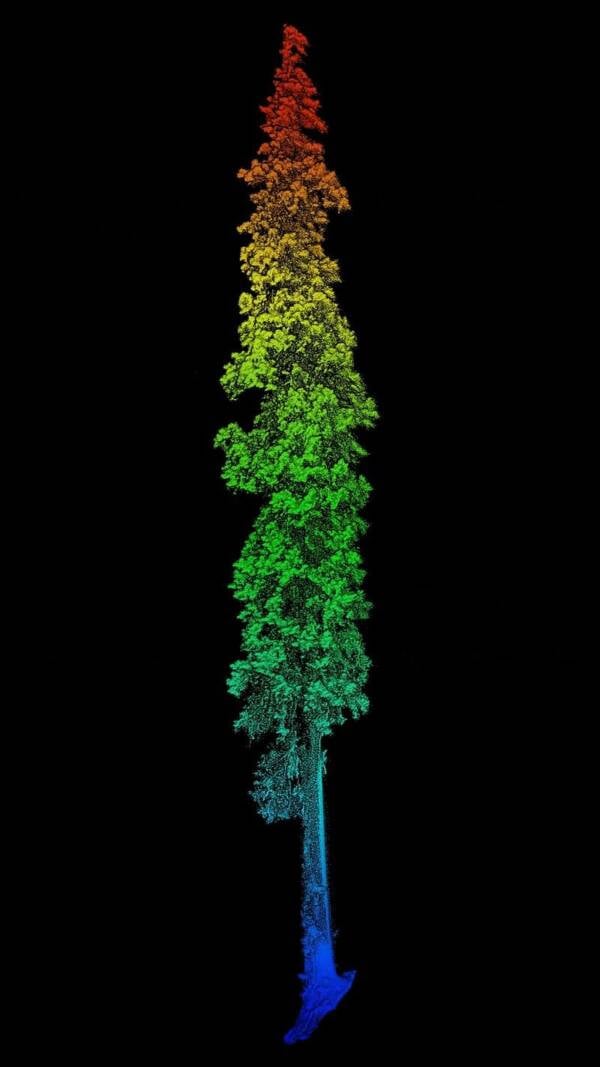The 335-foot-tall cypress tree is believed to be the second-tallest tree in the world.

Peking UniversityThe cypress tree was discovered as part of an ongoing ecological survey of the region.
Researchers from Peking University recently discovered the tallest tree in Asia: a massive 335-foot cypress tree that would tower over the Statue of Liberty.
Per The Independent, the team made the discovery in May near Bome County’s Nyingchi City in Tibet. The tree was sitting in Yarlung Tsangpo Grand Canyon, the world’s deepest canyon with a maximum depth of 19,714 feet.
The tree’s precise species remains unknown, though Chinese media suggested that it could be either a Himalayan cypress or a Tibetan Cypress.
Prior to this discovery, the record holder for Asia’s tallest tree, which was discovered in May 2022, stood at a height of roughly 272 feet. A month earlier, researchers had found another incredibly tall tree, standing 252 feet tall. But remarkably, the newly discovered cypress is not alone in its towering height. Researchers say numerous trees in the surrounding forest stand over 279 feet.
According to Live Science, these discoveries came as part of an ongoing conservation effort by Peking University to catalog the various trees in the Tibet Autonomous Region, particularly in the area near Nyingchi City. This region is increasingly affected by global climate change and development, prompting researchers to investigate the area’s ecological diversity to help with environmental protection efforts.

Peking UniversityThe only tree taller than this cypress is a massive redwood in California.
The researchers utilized drones, lasers, and radar equipment to map out the area’s trees and pinpoint their heights from the ground, leading to the new discovery. To confirm that it is indeed the tallest tree in Asia, the team created a 3D model of the cypress using a 3D laser scanner and lidar technology, which provides distance measurements via light beams.
The tree is also notable for its supporting roots, which are not buried completely underground, according to Peking University professor Guo Qinghua. Additionally, the tree has a complex system of branches and a vertical structure that creates “ideal microclimates and habitats for some endangered plants and animals,” according to a statement from Peking University.
Giant trees like the ones found in Yarlung Tsangpo Grand Canyon are incredibly rare. They require highly specific conditions to thrive, including having suitable soil and climate conditions. They also have to manage to avoid being destroyed by a variety of factors including wind, fire, lightning, or people.
That said, giant trees are extremely valuable when it comes to biodiversity and ecology. Their existence can also provide significant insight into the health and integrity of the ecosystem in which they have grown. This is why their conservation is such an important focus for researchers across the globe.

Peking UniversityA 3D map of Asia’s tallest tree.
For example, in 2022, the U.S. Park Service had to limit public access to the world’s tallest tree, a 381-foot-tall coastal redwood in California’s Redwood National Park. The tree, given the nickname Hyperion, is believed to be between 600 and 800 years old.
Since the tree’s discovery in 2006, countless people have visited the Redwood National Park to bask in Hyperion’s greatness. Unfortunately, some of those people also decided to climb Hyperion and leave trash laying about, damaging both the tree and the undergrowth that surrounds it.
It’s easy to think of these massive trees as just another tree in a forest, but these behemoths hold stories within their leaves. Scientists believe there is much to be learned from the conversation and further study of giant trees like this one.
After reading about Asia’s tallest tree, learn about the Methuselah tree — the oldest tree in the world. Or, discover the manchineel tree, a tree so toxic it has been nicknamed “the tree of death.”





